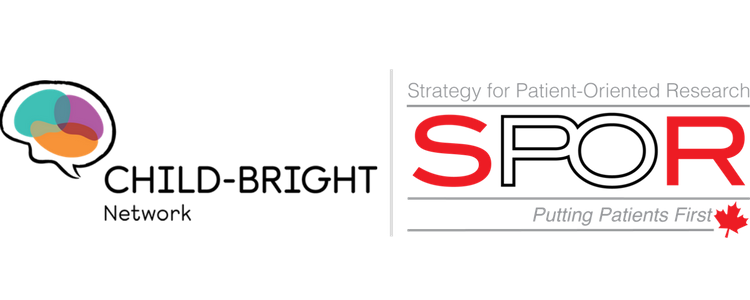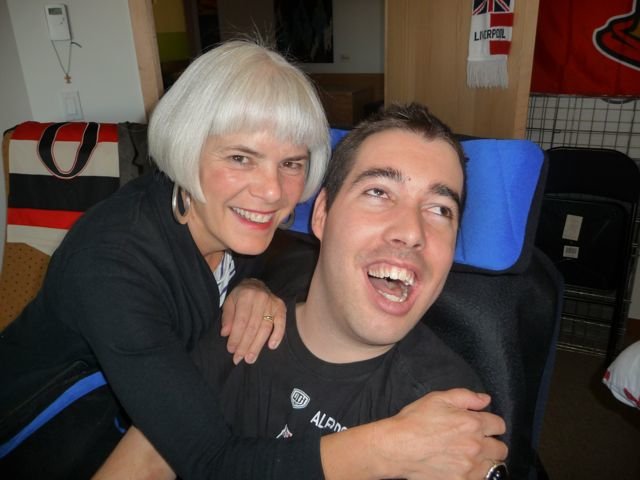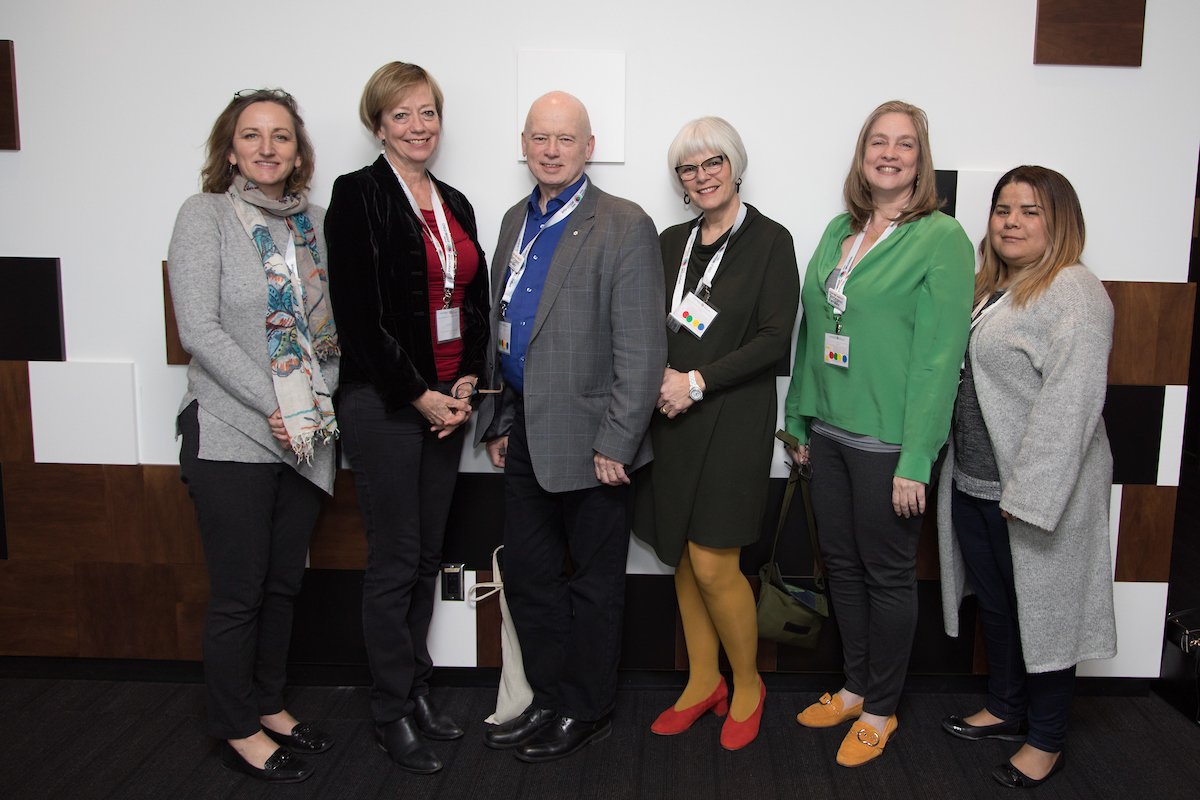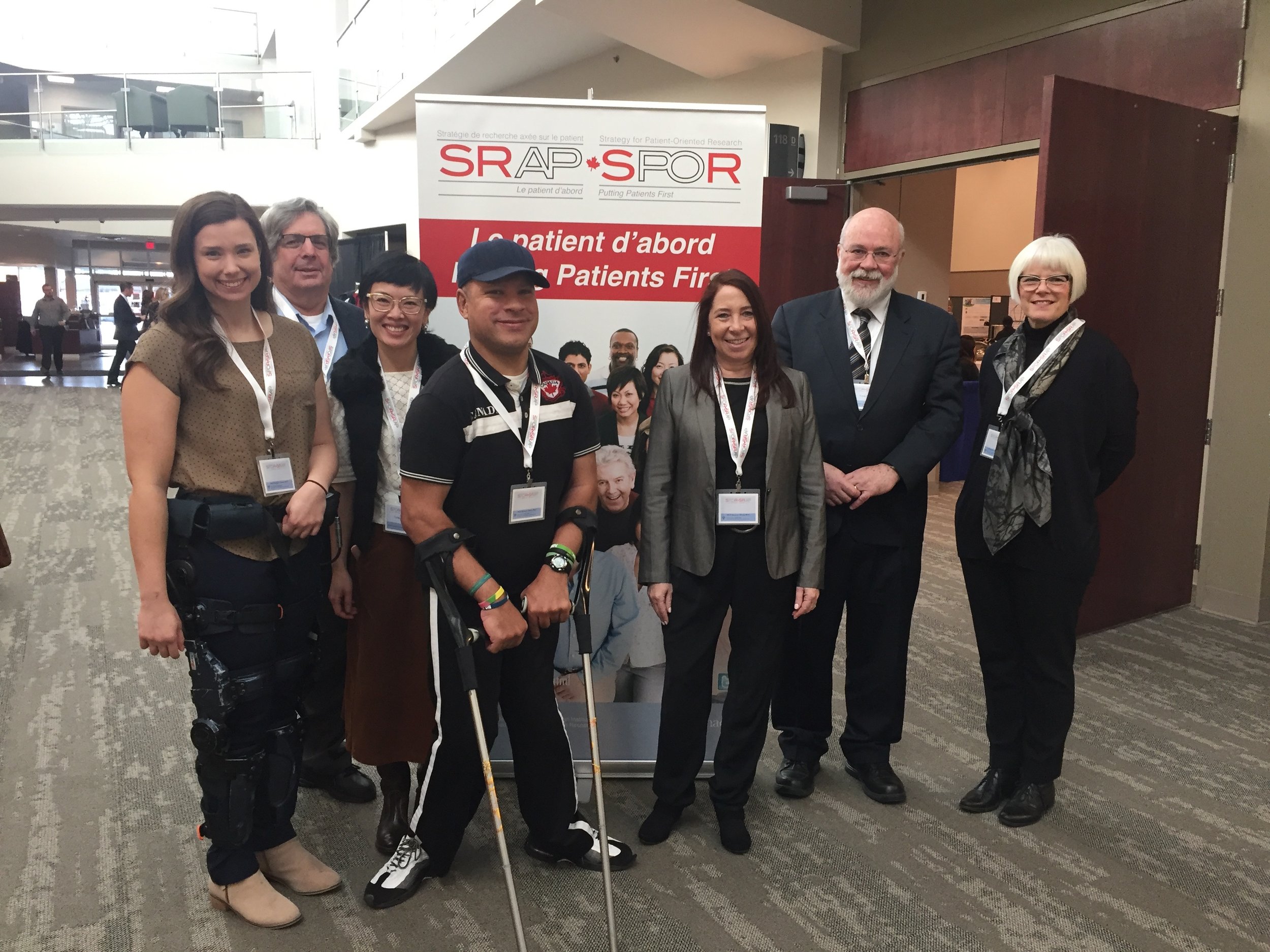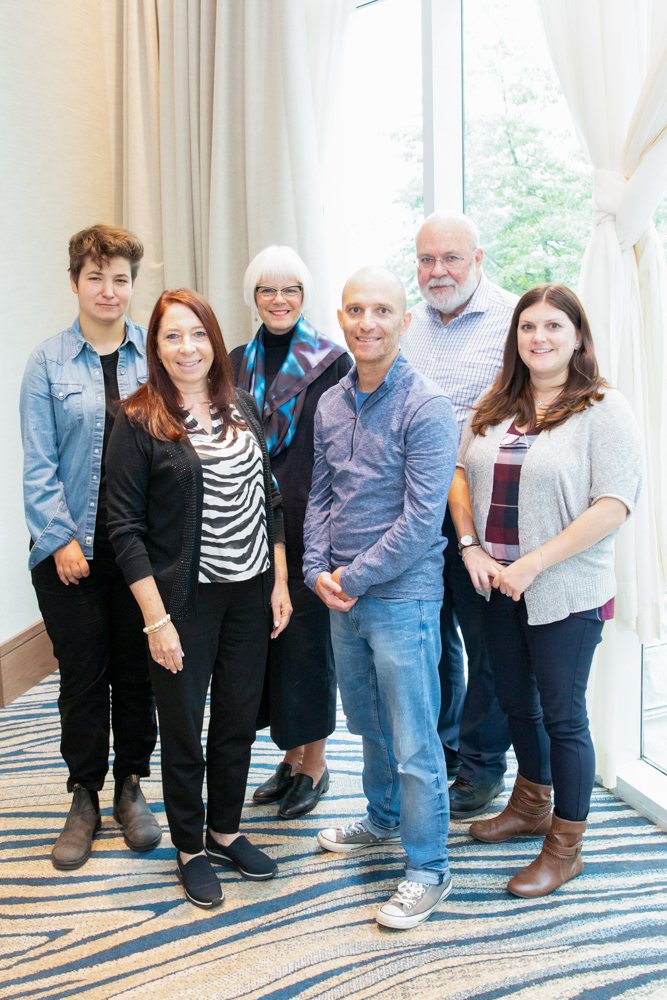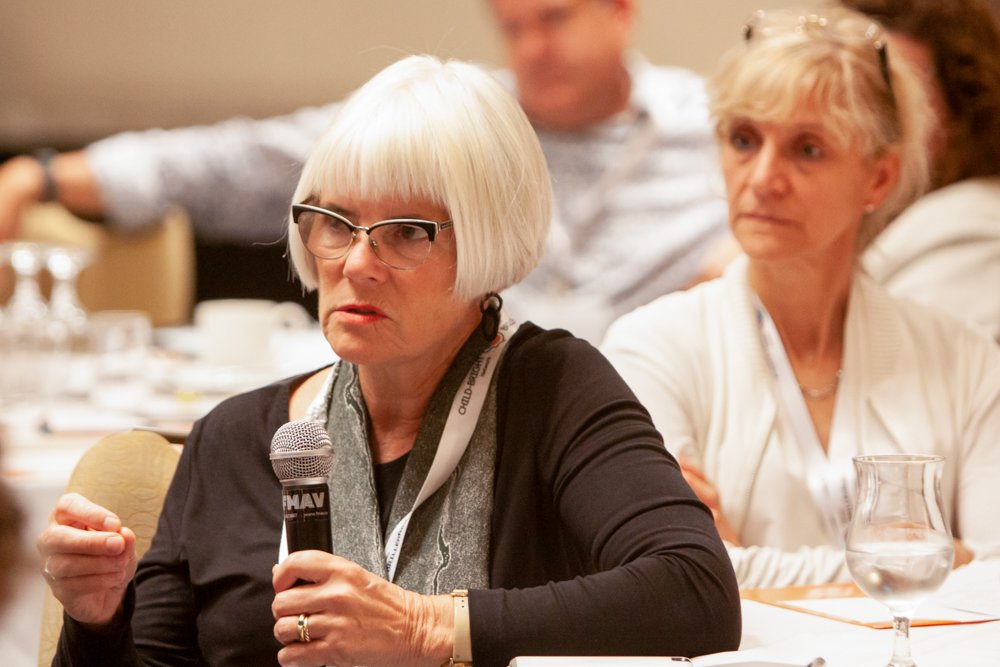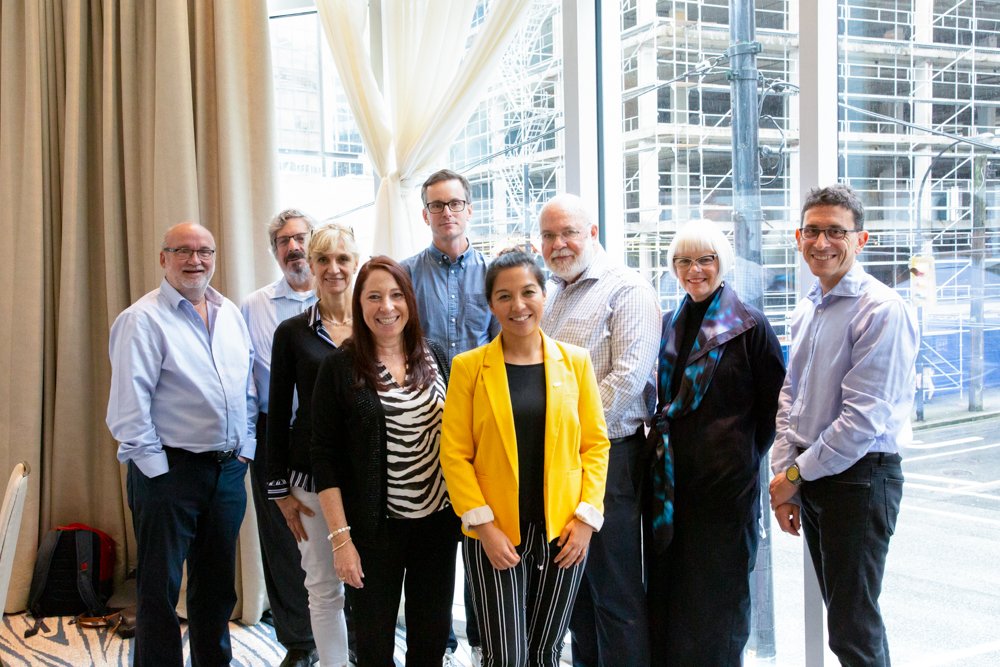In June 2023, one of our dearly valued network members, Carrie Costello, was selected as the recipient of our Frank Gavin Patient Engagement Leadership Award. Established in honour of CHILD-BRIGHT's first Director of the Citizen Engagement Program, the award recognizes patient engagement leaders in research related to children and youth with brain-based developmental disabilities.
About Carrie
Frank Gavin (left), Carrie Costello (centre), and Sharon McCarry (right).
As we considered candidates for the Frank Gavin award, Carrie repeatedly stood out for her unrivalled passion, tireless advocacy work, and seemingly limitless energy. “It is indeed rare that a person assumes a role that is immediately recognizable as a role they were born to do,” wrote one enthusiastic individual in their letter of support. “Carrie is one of these people.”
In their statements, Carrie’s nominators described her as someone with natural intuition and compassion, and an inspiring ability to connect with diverse audiences within the health care and education systems.
Like many of the network’s lived experience partners, Carrie had no formal background in research when she joined the CHILD-BRIGHT family. After graduating with a Bachelor of Fine Arts from the University of Victoria, she became an award-winning playwright for young audiences, a skilled puppeteer, and a sought-after educator. Carrie also became a proud mother of three. In 2016, it was pure chance that led her to CHILD-BRIGHT: “One of the network’s research teams put out a call for parents with lived experience,” says Carrie, whose middle daughter has an intellectual disability and a seizure disorder. “The project looked really interesting, and so I answered it!”
Carrie, based in Manitoba, joined the Parent Advisory Committee for the BRIGHT Coaching study, which created and tested a coaching program for families of preschoolers with suspected developmental delays in four provinces. Carrie had a strong voice from the start, and her valuable insights and contributions shaped the program’s content and materials. “The move to support families in a research setting didn’t feel strange at all,” recalls Carrie. “And I love to continually learn. Similar to theatre, each new project brings me new opportunities to learn and meet new people.”
In 2019, Carrie became CHILD-BRIGHT's Parent Liaison, working directly with other parents of children with brain-based developmental disabilities involved in different research projects and committees, and acting as their link to the CHILD-BRIGHT Citizen Engagement Council. When the BRIGHT Coaching project transitioned to its second phase, Carrie was invited to be one of the six co-principal investigators (co-PIs)—a move that testifies to her growing expertise and influence in the brain-based developmental disability community.
A natural leader
Carrie and her daughter.
When asked what winning the Frank Gavin award meant to her, Carrie is candid. “Honestly, this award came at a moment I really needed it. I was losing hope that the work I was doing made any difference. Receiving this recognition from so many people I value and respect is a great honour.”
Since 2019, Carrie has supported the patient-oriented research work of 12 CHILD-BRIGHT Phase 1 research projects and continues to offer support in Phase 2. She’s also serving as the Vice-Chair of the CHILD-BRIGHT Citizen Engagement Council, welcoming new members of the brain-based disability community to the network. What’s more, she publishes widely in academic journals and the lay press. “Although she has been formally involved in research only since spring 2021, her list of accomplishments demonstrates a lifetime commitment to patient engagement,” wrote one of Carrie’s award nominators.
All who have met and had the pleasure of working with Carrie agree that her impact on the patient-oriented research community has, and continues to be, profound. She is a natural leader, teacher, advocate, and collaborator. We can think of no person more deserving of this award. On behalf of everyone at CHILD-BRIGHT, we’d like to extend our heartfelt congratulations to Carrie! We’re thrilled to be able to celebrate your many achievements.
In 2024, we will be widening the scope of the Frank Gavin award: Eligible CHILD-BRIGHT candidates will include adults as well as youth with lived experience involved in brain-based developmental disability research. Look out for our call for nominations in the new year!
